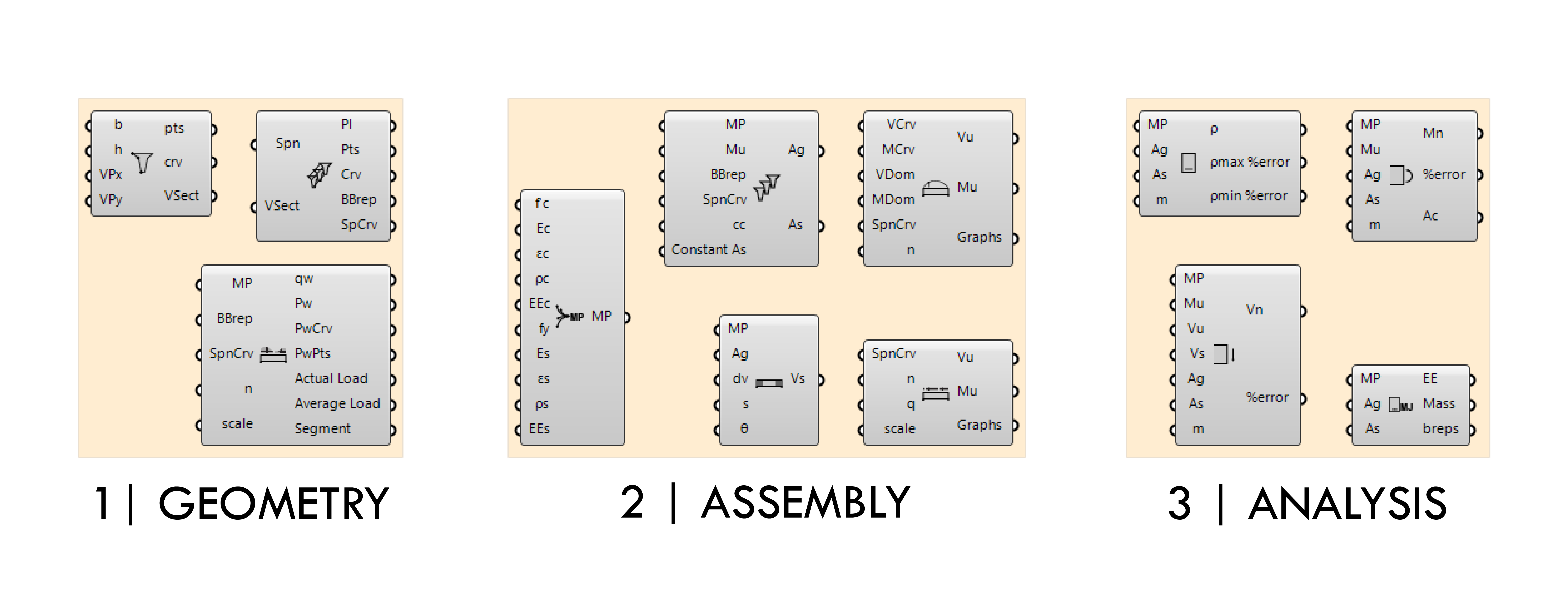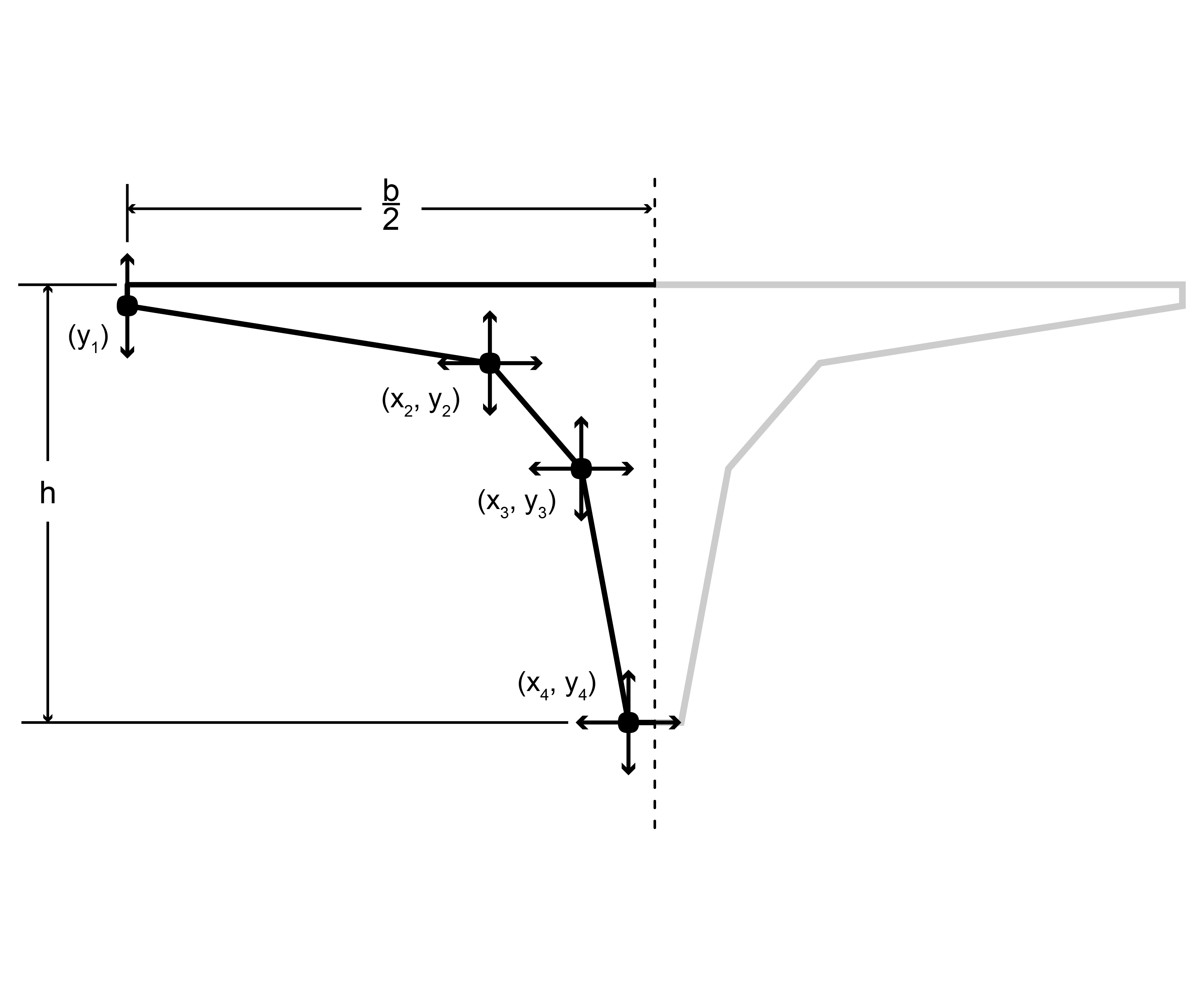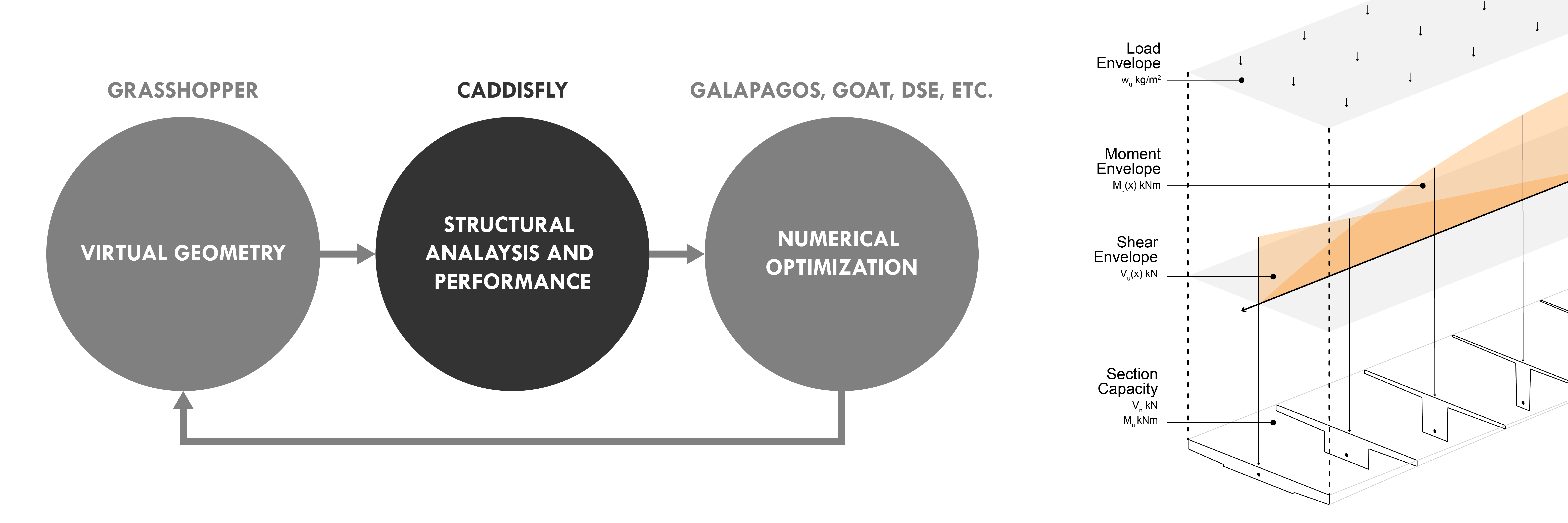Caddisfly
Analytical Structural Analysis Tool

The construction industry is resource intensive and unsustainable. As the construction industry continues to expand, so too do the economic and ecological costs of building. Depending on location, construction can account for 10-30 percent of carbon emissions. Construction also accounts for nearly half of the world’s natural resource consumption. Today concrete is the most produced and utilized synthetic material in the world. Consequently, the mounting use of concrete structures in cities has led to a developing concern for the environmental costs of construction.
New tools have bolstered the design of material efficient structures with increased precision and predictability. Yet existing optimization techniques typically neglect the complexity of reinforced concrete as a configuration of various materials – aggregate, steel, cement, water – resulting in excessive material use and uncertain results. Caddisfly connects an understanding of concrete mechanics to new methods of analytical structural design and numerical optimization. Through computational structural design, there is an opportunity to build far more with far less, reducing the economic and environmental costs while meeting the demands of a growing population. Caddisfly makes the design of material efficient concrete design easier by providing real-time analysis of a concrete element along its length.



